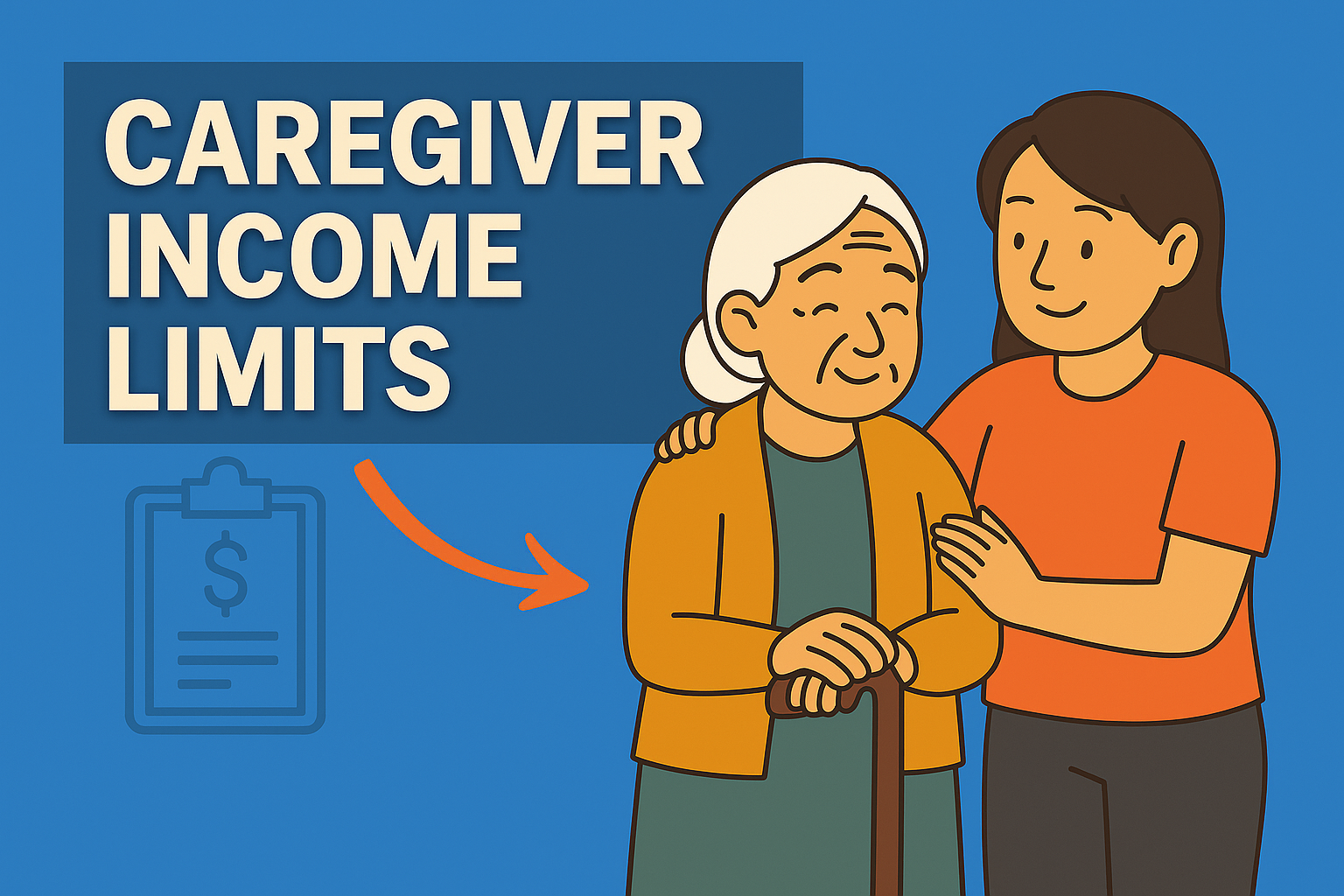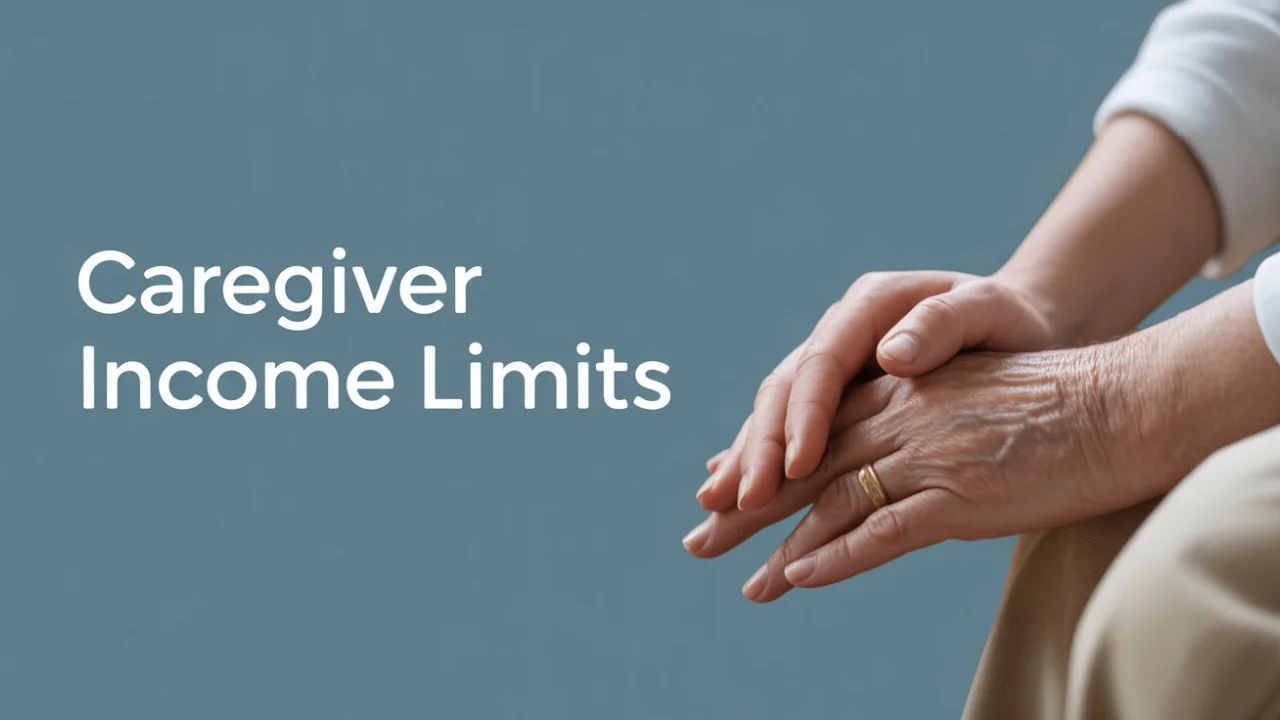Caregiver Income Limits
Family caregivers play an essential role in helping loved ones with health needs, daily tasks, and emotional support. In some cases, caregivers can receive payment for their time through Medicaid waiver programs, veteran benefits, or other state-based services. However, these programs often have income limits that affect eligibility for both the caregiver and the person receiving care.
Understanding caregiver income limits is important for anyone who wants to get paid for providing care to a family member. Knowing the rules can help you plan your budget, meet program requirements, and avoid losing benefits.
What Are Caregiver Income Limits?
Caregiver income limits are financial thresholds set by government or insurance programs to determine whether you or your loved one qualify for paid caregiver benefits. These limits can be based on:
The care recipient’s income (such as Social Security, pension, or wages)
The caregiver’s income (in some programs)
The household’s total income
Programs may also look at assets like savings, property, or investments. This process is often called means testing. If the income or assets exceed the program’s maximum, you might not qualify for payment.
Why Do Caregiver Income Limits Exist?
Income limits exist because many caregiver pay programs are funded by Medicaid, state budgets, or veteran services. These programs aim to help individuals who would struggle to afford care without assistance. By setting limits, agencies ensure resources go to people with the greatest financial need.
Without these limits, funding could run out quickly, and fewer people would have access to essential care. Income rules also prevent overlap between multiple public benefits, such as Medicaid and Social Security.
Common Programs That Have Income Limits
Not all caregiver payment options have income limits, but many of the largest and most widely used do. Here are examples:
1. Medicaid Waiver Programs
Medicaid waivers let states pay family caregivers for helping relatives at home instead of placing them in a nursing home. Eligibility is based mostly on the care recipient’s income and assets.
Many states set monthly income limits for the person receiving care (often between $2,742 and $2,829 in 2025, though this varies by state).
Asset limits may be around $2,000 for individuals, but states can differ.
2. Veteran Aid and Attendance Benefits
Veterans who need help with activities of daily living may qualify for Aid and Attendance. Income limits are based on the veteran’s annual income after deducting unreimbursed medical expenses. Spouses who act as caregivers can sometimes be compensated.
3. State-Based Caregiver Support Programs
Some states run their own caregiver payment programs outside of Medicaid. These can have income requirements for either the caregiver, the care recipient, or both.
4. Supplemental Security Income (SSI)
If the care recipient gets SSI, their eligibility depends on income and asset rules. Earning above the SSI threshold can impact benefits, which in turn can affect caregiver payment eligibility if tied to Medicaid.
How Income Limits Are Calculated
Each program calculates income differently, so it’s important to check the rules for your specific state and program. Factors that may be counted include:
Wages from employment
Social Security retirement or disability benefits
Pensions
Rental income
Certain types of investment earnings
Gifts or cash support from family members
Some programs also allow deductions for:
Medical expenses
Medicare premiums
Health insurance costs
Certain living expenses for a spouse or dependents
This means your adjusted income could be lower than your gross income when applying.
How Caregiver Income Can Affect Eligibility
In many programs, the caregiver’s personal income does not directly affect the care recipient’s eligibility. However, there are exceptions:
Spousal caregiving: If you are married to the person you care for, your income may be counted in their household total.
Tax considerations: Earning caregiver pay may affect your taxes and possibly your eligibility for other benefits like health insurance subsidies.
Wage caps in contracts: Some caregiver agreements through agencies have maximum pay rates, which indirectly limit caregiver income.
Income Limits and Activities of Daily Living (ADLs)
Eligibility for paid caregiver programs is not just about income — the person receiving care usually must show a need for assistance with activities of daily living, such as:
Bathing
Dressing
Eating
Toileting
Mobility and transferring
These needs often have to be verified by a doctor or nurse through an assessment. Even if you meet income limits, the care recipient must also meet medical and functional requirements.
Examples of Caregiver Income Limits by State
While every state is different, here are some general 2025 examples:
California In-Home Supportive Services (IHSS): Income limits focus on the care recipient. A single individual must have countable income under a set amount tied to Medicaid eligibility.
New York CDPAP: Caregiver income is not considered, but the person receiving care must meet Medicaid’s income and asset rules.
Florida Medicaid Waiver: Care recipient income typically must be under $2,742/month with assets under $2,000.
Texas STAR+PLUS Waiver: Similar income and asset caps for the care recipient, with allowances for medical deductions.
Always check your state’s Department of Social Services or Medicaid office for the latest figures.
Tips for Managing Income to Qualify
If you are close to the income limit, there may be legal and ethical ways to qualify without breaking rules:
Use allowable deductions — Document all medical expenses, health insurance premiums, and therapy costs.
Set up a Miller Trust or Qualified Income Trust (QIT) — In some states, these trusts can hold excess income to help meet Medicaid rules.
Plan asset transfers carefully — Giving away property or money right before applying can trigger penalties. Always seek professional advice.
Explore spousal impoverishment rules — If caring for a spouse, certain income and assets may be protected.
How Paid Caregiver Income Impacts Taxes
If you receive payment as a caregiver, you may need to report it as taxable income. However, there are situations where caregiver pay is exempt:
Payments under a Medicaid Home and Community-Based Services Waiver can sometimes be excluded from income taxes if the caregiver and care recipient live together.
Other caregiver wages are subject to payroll taxes, Social Security, and Medicare deductions.
Check with a tax professional or the IRS for guidance.
The Role of Documentation and Contracts
To avoid payment disputes and ensure compliance with income rules:
Have a written caregiver agreement outlining pay, duties, and hours.
Keep timesheets or care logs.
Save receipts for medical expenses and deductions.
Respond quickly to requests for proof of income from Medicaid or other agencies.
Good recordkeeping can prevent delays or benefit loss.
Final Thoughts
Caregiver income limits are a key part of determining eligibility for paid caregiving programs. Whether you’re helping a parent, spouse, or other loved one, understanding these rules can help you plan your finances, avoid unexpected denials, and maximize available support.
If you’re unsure about your eligibility, contact your state Medicaid office, a veteran service officer, or a local caregiver support organization. They can provide program-specific information, help with applications, and explain allowable income deductions.
At Paid.Care, we help family caregivers learn about programs that may pay them for their work. Knowing income limits is just the first step toward getting the support you deserve while caring for someone you love.
FAQs
-
In most programs, income limits apply to the care recipient, not the caregiver. For example, Medicaid waiver programs and many state caregiver payment programs base eligibility on the person receiving care. However, if you are a spouse caregiver, your income may be counted as part of the household total. Always check your state’s specific rules before applying.
-
If income is above the program’s limit, the care recipient may lose eligibility for benefits like Medicaid or a state caregiver pay program. In some cases, you can still qualify by using allowable deductions, such as medical expenses or health insurance premiums, to reduce countable income. Some states also offer Qualified Income Trusts (Miller Trusts) to help meet income rules.
-
Yes, in many cases caregiver pay is taxable and must be reported on your tax return. However, wages paid under certain Medicaid Home and Community-Based Services Waivers may be exempt from federal income tax if you live with the person you care for. Check with a tax professional to confirm how the rules apply to your situation.
-
Income limits vary by state and program. You can contact your state Medicaid office, Department of Social Services, or local Area Agency on Aging for the most current figures. Many state websites also publish annual updates with specific income and asset thresholds for caregiver payment programs.




